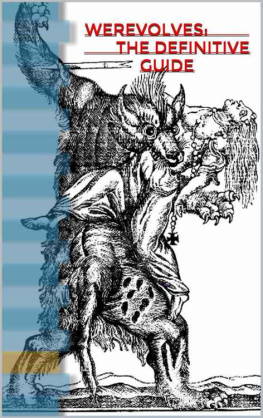

First published 2000
This edition first published 2004
The History Press
The Mill, Brimscombe Port
Stroud, Gloucestershire, GL 5 2 QG
www.thehistorypress.co.uk
This ebook edition first published in 2013
All rights reserved
Perry Biddiscombe 2000, 2004, 2013
The right of Perry Biddiscombe to be identified as the Author of this work has been asserted in accordance with the Copyrights, Designs and Patents Act 1988.
This ebook is copyright material and must not be copied, reproduced, transferred, distributed, leased, licensed or publicly performed or used in any way except as specifically permitted in writing by the publishers, as allowed under the terms and conditions under which it was purchased or as strictly permitted by applicable copyright law. Any unauthorised distribution or use of this text may be a direct infringement of the authors and publishers rights, and those responsible may be liable in law accordingly.
EPUB ISBN 978 0 7524 9642 9
Original typesetting by The History Press
CONTENTS
LIST OF ILLUSTRATIONS
Picture sources:
Illustrations are from the authors collection.
Plate Section
Freikorps Werdenfals marches into Munich, 1919
The Schlageter Company of Self-Defence Storm Battalion Heinz, 1921
A Hitler Youth leader caught behind Allied lines
Siegen oder fallen!, Vlkischer Beobachter, 3 April 1945
The Wolfsangel
Anschlagsarten bei der Panzerfaust Vlkischer Beobachter, 18 February 1945
Dead SS and Luftwaffe men in civilian dress, April 1945
Hitler Youth radio operators
Wreckage of a locomotive driven onto an American armoured column, April 1945
A train derailed by saboteurs, April 1945
HSSPf Jrgen Stroop
SA rifle training, Illustrierter Beobachter, 15 June 1944
Boy snipers captured in Aachen, October 1944
Georg Heidorn, a Werewolf guide
Hans Zberlein, Freikorps Adolf Hitler chief
Swastikas cut into ice on the Neckar river, 23 December 1945
Hitler Youth leader Fred Borth
Siegfried Kabus, leader of the ODESSA bombing gang in Stuttgart
Nest for hatching new Nazis, The Milwaukee Journal, 1946
A dead sniper on display, Lbeck, May 1945
Maps
Map of security incidents in the Rhineland, May June 1945
Map of civil and internal security incidents in the US zone, November 1945 January 1946
PREFACE AND ACKNOWLEDGEMENTS
T his book is a sequel to one that I wrote several years ago titled Werwolf!, published by the University of Toronto Press and the University of Wales Press. In Werwolf!, I argued that the Nazi guerrilla movement of 1944-45 the Werwolf had a considerable impact on the invasion and occupation of Germany, and that it provided the main thematic focus for a distinctive final stage in the history of the Nazi regime. I also contended that the movement reflected some important characteristics of the Nazi state, particularly with regard to its allegedly totalitarian character. In order to drive these points home, Werwolf! was written and organized in an expository fashion, and a large number of examples were deployed in order to validate the main themes of the book.
The present work is a very different kind of effort. If Werwolf! was an attempt to provide a broad survey of the topic, this book is best understood as giving the proverbial view from the ground, and it emphasizes corroborative detail. The introduction covers the folklore and cultural motifs that Werewolf organizers exploited in trying to establish historical precedents for the movement. are comprised of a number of vignettes, some brief, some quite lengthy, depending on the quality and depth of source material. The conclusion spells out some of the consequences and significance of Werewolf militancy.
In all of this, I have refrained from trying to be exhaustive in covering the scope and range of Werewolf activities, preferring instead to address a limited number of incidents, groups and persons with some degree of narrative and descriptive precision. Who were the Werewolves? What did their training entail? How did it feel to be deployed in hostile terrain behind the lines of the most powerful armies ever assembled, or to be told to hunt ones own countrymen in murderous vigilante actions? How were such operations rationalized by the people who planned and executed them? I have trusted that such questions will provoke interesting answers. In the final analysis, I hope that the resulting work complements its predecessor but also works independently of it, providing the reader with stories and moments of the past that are intrinsically absorbing and which, given the neo-Nazi revival in Germany, have some importance.
Like all writers, historians tend to have a solitary reputation. Ours, however, is actually a highly collaborative effort that usually involves large numbers of people standing behind the shoulder of the author. My heartfelt thanks go to these mainstays who have made this work possible, especially the inter-library loans staff at the University of Victoria. Through their ability to lay their hands on hard-to-find material, these women have proven to be intellectual life-savers. Thanks also to the archivists at the US National Archives and the various bureaux of the Bundesarchiv, who helped me gather fresh documentary material and photographs for this study. In particular, John Taylor at Archives II in College Park deserves commendation for his encyclopedic knowledge of American intelligence records, the benefits of which he shares most willingly. Thanks as well to my colleague David Zimmerman, who kindly read a draft of and offered many helpful comments.
My publisher, Jonathan Reeve, helped me devise the project and gave me some sense of what the book could be. His unflagging enthusiasm kept me inspired, while his good sense kept me on the straight and narrow.
Most of all, my heartfelt thanks to my wife, my son and my dogs, who put up with me as I dived into my files for a six month hiatus, only to occasionally emerge in order to hog computer time. As always, my familys patience, love and support has been crucial.
Perry Biddiscombe
Victoria, BC
INTRODUCTION
T he Werewolves were no bit players on the stage of modern European history. Although they are often portrayed in World War Two literature as minor supernumeraries in a tragic Nazi finale, the instruments of a last gasp effort that was derided, ineffective and ignored, in reality the Werewolves did considerable damage. Their malicious combination of guerrilla warfare and vigilantism caused the deaths of several thousand people, either directly or through the Allied and Soviet reprisals that they provoked. The property damage inflicted upon the already devastated economies of Central Europe equalled tens of millions of dollars. In addition, the policies of Germanys occupiers and neighbours, which in a best case scenario could have been expected to have been tough on Germany, were prompted by the Werewolves to become tougher yet. The Soviets and their Polish and Czech friends moved quickly and brutally to eject German minorities from the eastern part of Central Europe, and inside Germany the occupying powers imposed rigorous non-fraternization and denazification policies and severely prohibited German civilian movement and right of assembly. Almost all the countrys soldiers, sailors and airmen were incarcerated, at least temporarily, and Germanys central government was dismantled. Anyone who thinks that Allied occupation policies in Germany were too harsh, however, should keep in mind what the Werewolves were trying to do, and what impact the organization of such a movement under the noses of the invaders and occupiers was likely to have had.
Next page










